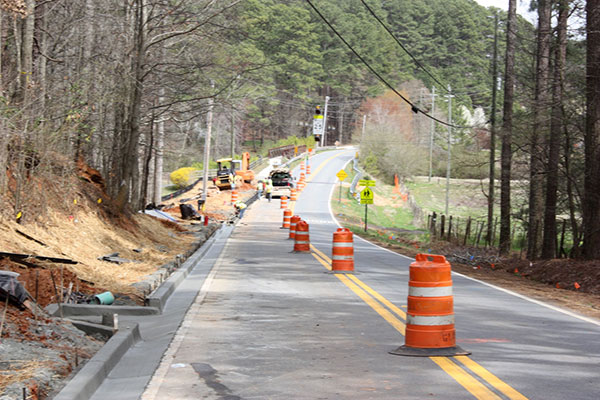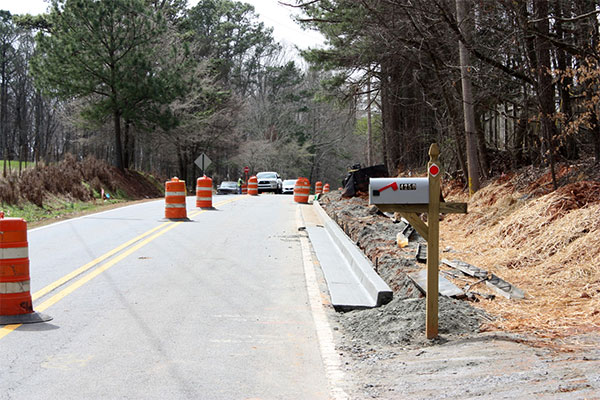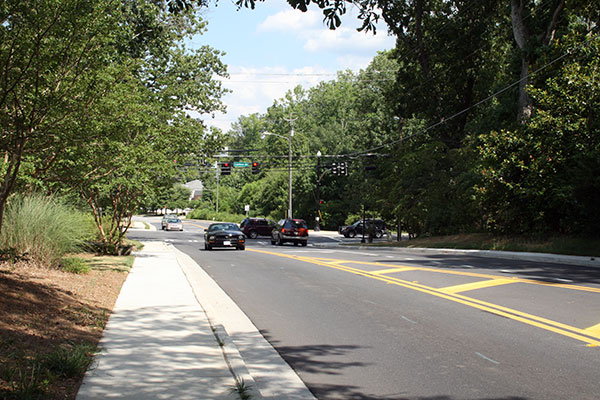On an almost daily basis, someone asks me, “What is right-of-way?” In the context of transportation projects, right-of-way is a term that is used to describe the “right of passage” over another’s parcel of land. During the preliminary engineering phase of a roadway project, design engineers determine the most feasible and cost-effective route for a roadway. These thoroughfares can range from brand-new highways to roadway improvements that augment existing transportation infrastructure. The common thread among such projects is enhanced safety as well as improved traffic flow, capacity and access—all of which benefit a community. Some highway projects, however, cannot be built within an existing right-of-way and encroach on private property that is needed for a public improvement project. And that is where right-of-way acquisition comes in, which involves the acquisition of land or other property rights from a private property owner in order to build a roadway.
I am fortunate to have served as State Local Government Right of Way Manager for Georgia Department of Transportation (GDOT), garnering more than 30 years of experience in right-of-way acquisitions, and now bring that knowledge to GS&P. More than three decades in the field has taught me that the acquisition of commercial- or private-owned property not only requires careful adherence to state and federal guidelines and regulations, but also a passion for effective communication. In today’s post, I explore the often-delicate art of negotiation as it relates to the right-of-way acquisition process.

Understanding the Process
One thing that has served me well in my vocation is that I love talking to people, and good communication skills is vital in each stage of the right-of-way acquisition process. One of my key goals is to acquire property rights through “good faith” negotiations. What this means for me is drawing from my principles, as well as past knowledge and experience of the system, to support a successful outcome. Two key phases precede the negotiation phase of a right-of-way acquisition, starting with the planning phase, which typically involves environmental assessments, design studies and public involvement, in which members of the local community are informed of the need for a proposed project, as well as the potential social and economic impacts. It also gives community members a platform to ask questions and air their opinions on the acquisition process. This is followed by the valuation, also known as the appraisal, where a certified general appraiser assesses an opinion of value, and the State DOT Review Appraiser assesses the fair market value of a property. In this phase of the process, the property owner must be given the opportunity to accompany the appraiser during the inspection of their property.

Negotiation
Once the fair market value has been established, the next step in the process is the all-important negotiation phase, where a right-of-way agent meets with the property owner in person to present their agency’s (state, federal or municipal) offer of “just compensation” based on the findings of the appraisal report. This is where a solid knowledge of the acquisition process is crucial. It is also vital that an agent has a thorough understanding of the appraisal report and right-of-way plans prior to meeting with the property owner to help arm them with all the information necessary to make an informed decision. The owner may accept the agency’s offer, or present a counter offer based on an independent appraisal. Once the property owner agrees to the terms of offer, the agency will enter into a right-of-way contract with the owner, which sets forth the conditions of the acquisition. Ultimately, it is a right-of-way agent’s responsibility to make sure that a property owner fully understands their rights, and that those rights are protected.
One of the most important things I have learned as a right-of-way agent is that we must serve as an effective and trusted intermediary between the property owner and the agency, striking a delicate balance between compassion for the owner and the need to comply with state or federal regulations. At the end of the day, it is our job to acquire those property rights so the project can be constructed while maintaining both schedule and budget. A best practice that requires effective communication skills is helping property owners visualize what their property will look like following construction. This often involves sharing documentation such as construction plans to help explain the reasons behind the acquisition and give the owner a better understanding of why their property is needed. And most of the time, it is for safety reasons.
Another responsibility of the right-of-way agent is providing the property owner with relocation assistance. One of the most gratifying cases of my career involves an elderly couple who benefited from a relocation as they were living in an older house that had not been updated, and they did not have the means to purchase another home. I assisted the couple in applying for replacement housing during the relocation phase, and they were deemed eligible for a new home without having to pay a mortgage because their housing compensation was enough to purchase their home outright.
Assuring a Timely Acquisition
Those not familiar with transportation projects are often surprised to learn that most state and federal roadway projects require at least two years just to get through the design phase. And it could take longer if there are complex environmental, right-of-way, utility or railroad issues. Moreover, the subsequent right-of-way acquisition phase could take another two years, depending on the number or type of properties acquired. From there, it could take an additional two years to construct a project. So, adhering to a reasonable schedule during the right-of-way acquisition is critical. And that is ultimately achieved by effectively communicating with private property owners as well as all of the subject matter experts on a project.
